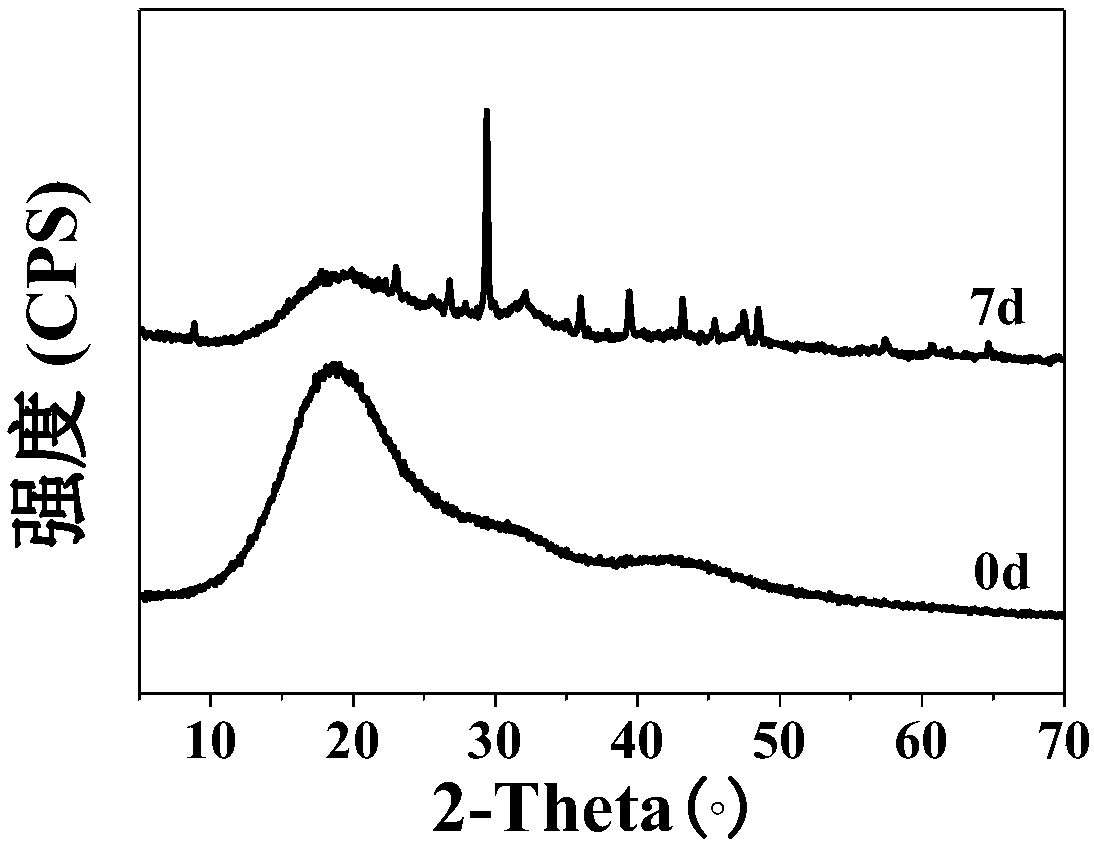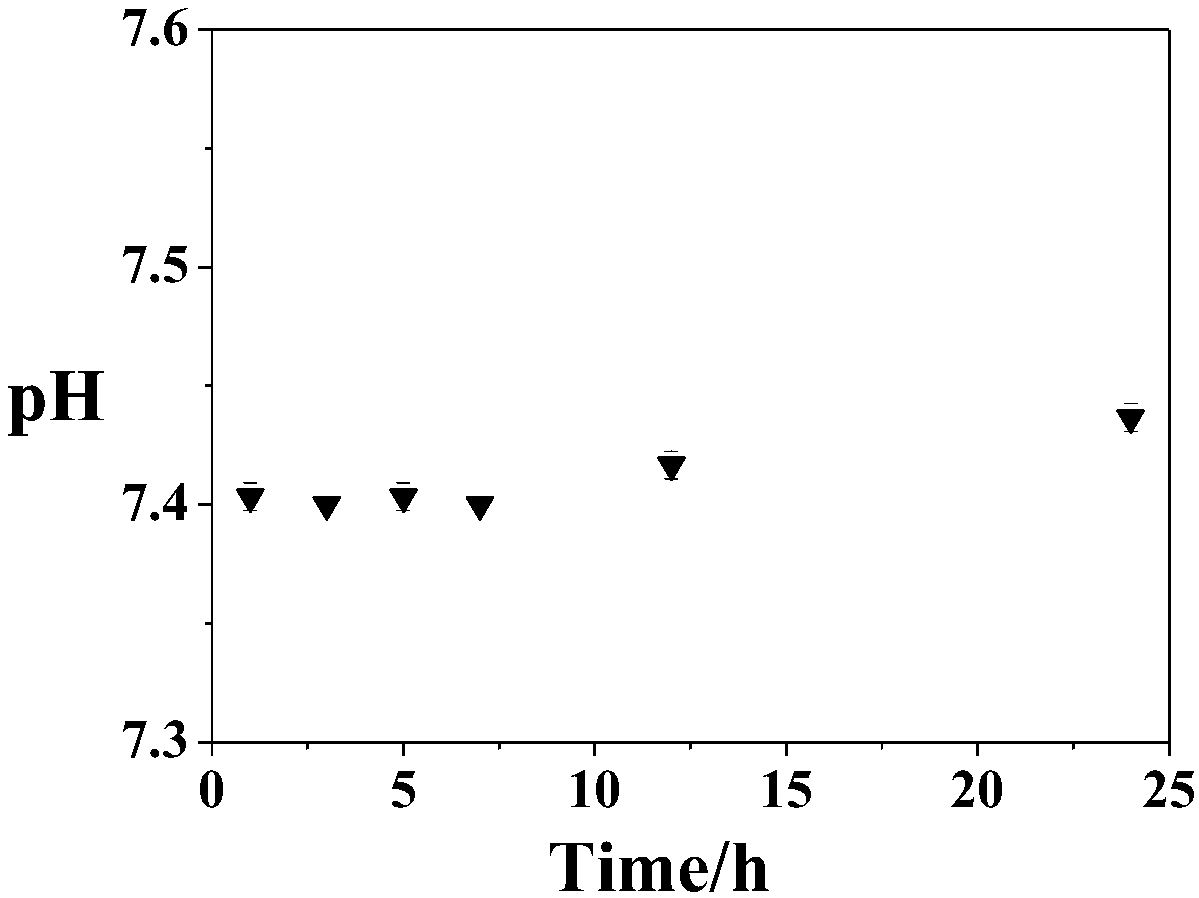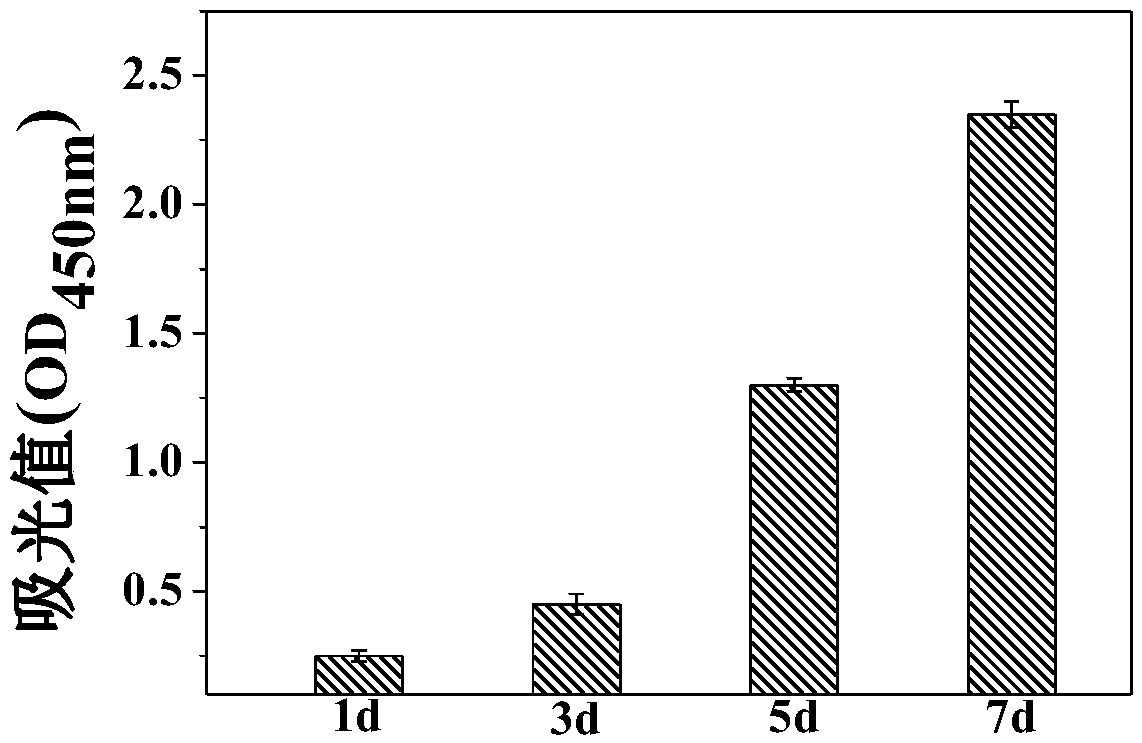Pulp capping agent for treating dental pulp lesions as well as preparation method and application thereof
A technology for pulp capping and teeth, which is applied in the field of pulp capping agent for treating dental pulp lesions and its preparation, can solve the problems of slow curing, degeneration and necrosis of dental pulp tissue, and local pH value increase, and achieves the promotion of formation and good biocompatibility. the effect of improving compatibility
- Summary
- Abstract
- Description
- Claims
- Application Information
AI Technical Summary
Problems solved by technology
Method used
Image
Examples
preparation example Construction
[0051] The preparation method of the present invention will be further described in detail in conjunction with specific examples below. It should be understood that the following examples are only for illustrating and explaining the present invention, and should not be construed as limiting the protection scope of the present invention. All technologies realized based on the above contents of the present invention are covered within the scope of protection intended by the present invention.
[0052] The experimental methods used in the following examples are conventional methods unless otherwise specified; the reagents and materials used in the following examples can be obtained from commercial sources unless otherwise specified.
[0053] In the present invention, the term "optionally" means that the feature exists or does not exist. Taking "optionally adding a hydrophilic polymer material" as an example, it means "adding a hydrophilic polymer material The feature of "materia...
Embodiment 1
[0055] A kind of preparation of the dental pulp capping agent of the restorative material of a kind of bioactive particles-can initiate polymerization, the steps are as follows:
[0056] Mix Bis-GMA and TEGDMA at a weight ratio of 1:1, and add a small amount of photoinitiator (camphorquinone, CQ) to obtain a repair material that can initiate polymerization. The bioactive particles (composed of P 2 o 5 -11mol%, SiO 2 -55mol%, CaO-35mol% calcium phosphosilicate glass) and the restorative material capable of initiating polymerization are mixed in a weight ratio of 1:2 to obtain a tooth pulp capping agent. Light curing for 60s, put it in artificial saliva for 24h, it was found that it can promote the formation of hydroxyapatite mineralization layer (such as figure 1 shown), and its pH is stable, such as figure 2 shown.
Embodiment 2
[0058] A kind of preparation of the dental pulp capping agent of the restorative material of a kind of bioactive particles-can initiate polymerization, the steps are as follows:
[0059] Bis-GMA, TEGDMA and 1,3-butanediol disalicylate were mixed in a weight ratio of 1:1:0.1, and a small amount of photoinitiator (camphorquinone, CQ) was added to obtain a repair material that could initiate polymerization. Then bioactive particles (strontium phosphosilicate glass and tricalcium phosphate with a mass ratio of 1:1, wherein the composition of the strontium phosphosilicate glass is P 2 o 5 -11mol%, SiO 2 -55mol%, CaO-29mol%, SrO-5mol%) and the restorative material capable of initiating polymerization are mixed in a weight ratio of 2:3 to obtain a tooth pulp capping agent. Light-cured for 60s, co-cultured with cells, it was found that it can promote the proliferation of dental pulp cells, such as image 3 As shown in , the higher the absorbance value, the greater the detected prol...
PUM
 Login to View More
Login to View More Abstract
Description
Claims
Application Information
 Login to View More
Login to View More - R&D
- Intellectual Property
- Life Sciences
- Materials
- Tech Scout
- Unparalleled Data Quality
- Higher Quality Content
- 60% Fewer Hallucinations
Browse by: Latest US Patents, China's latest patents, Technical Efficacy Thesaurus, Application Domain, Technology Topic, Popular Technical Reports.
© 2025 PatSnap. All rights reserved.Legal|Privacy policy|Modern Slavery Act Transparency Statement|Sitemap|About US| Contact US: help@patsnap.com



